Entering 2024, headless commerce is transforming how we think about online shopping. This popular approach separates the storefront from the backend, offering a new way to build websites.
This method allows unmatched customization and flexibility. In a world where what customers want is always changing, headless commerce adapts quickly and efficiently. It meets the changing needs of both businesses and their customers
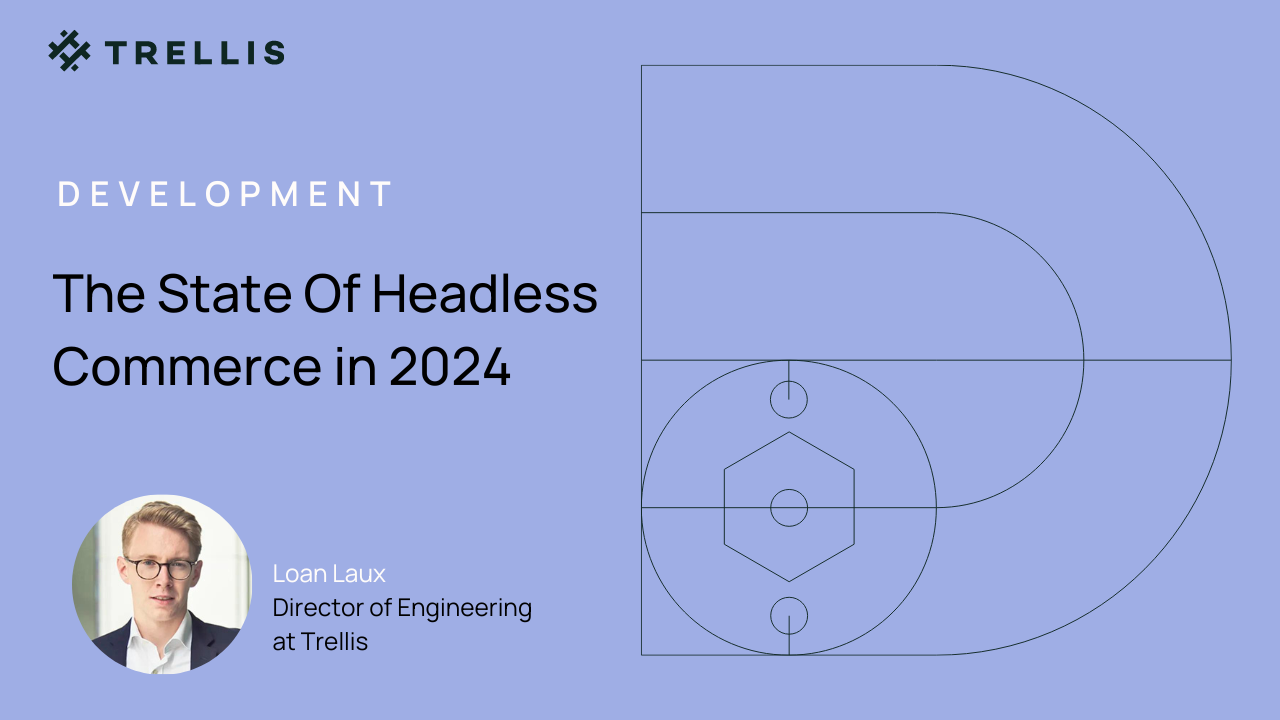
Headless Storefronts
VueStorefront
In 2023, the open-source storefront received a significant boost with $20 million in funding, enhancing its features. Back in 2020, when headless commerce was just emerging, VueStorefront quickly became a leading choice, independent of any specific platform. Since then, it has strengthened its status as a preferred option within the Magento community.
Pack Digital
Pack Digital, a rising star in the eCommerce world, offers a modular WYSIWYG storefront that addresses today’s online retail requirements. Filling the void created by Shogun Frontend’s retirement in 2023, it’s quickly becoming a go-to solution for modern eCommerce platforms.
Builder.io
While not a hosted storefront, Builder.io takes an interesting in-between approach. It allows users to build pages in a WYSIWYG editor using custom React components. Furthermore, it lets developers inject them into any headless frontend of their choice.
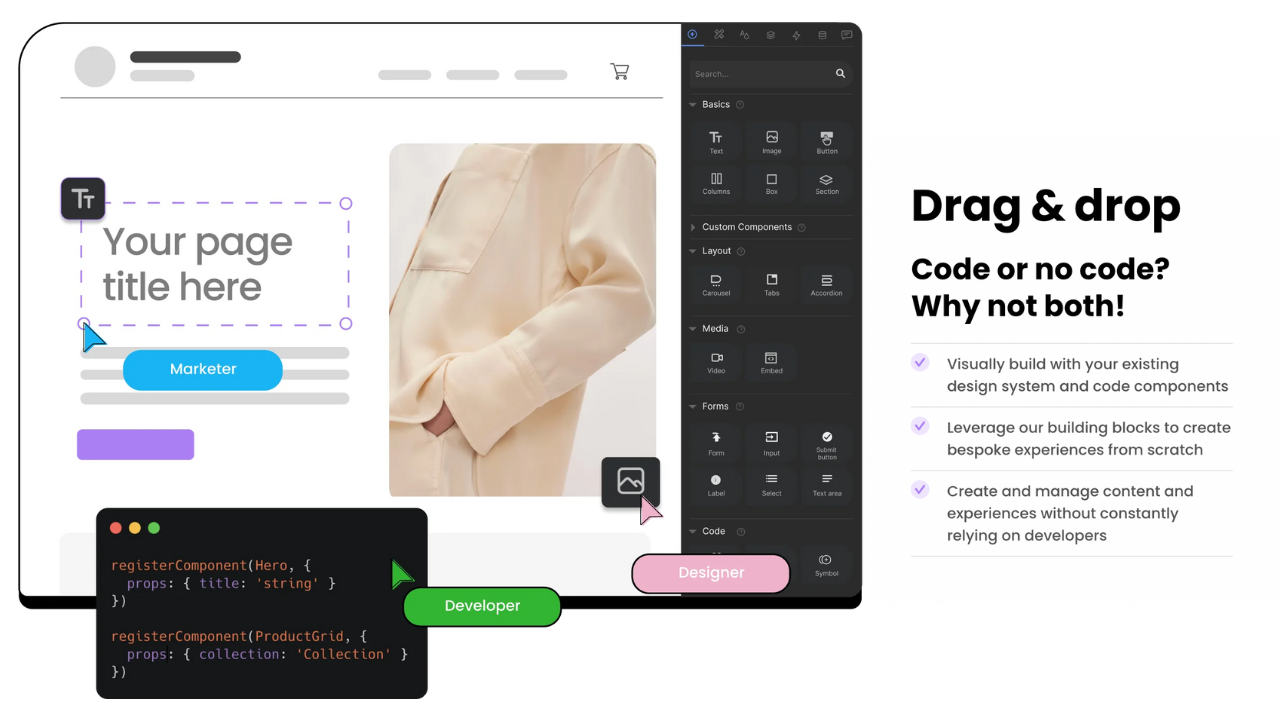
Next.js Commerce
Built by the creators of Next.js and Vercel, Next.js Commerce is an open-source storefront that’s platform-agnostic and community-supported. Its main goal is to showcase the latest innovations of Next.js applied to eCommerce. Consequently, the end result makes for arguably the best open-source storefront there is. Just fork it and customize it!
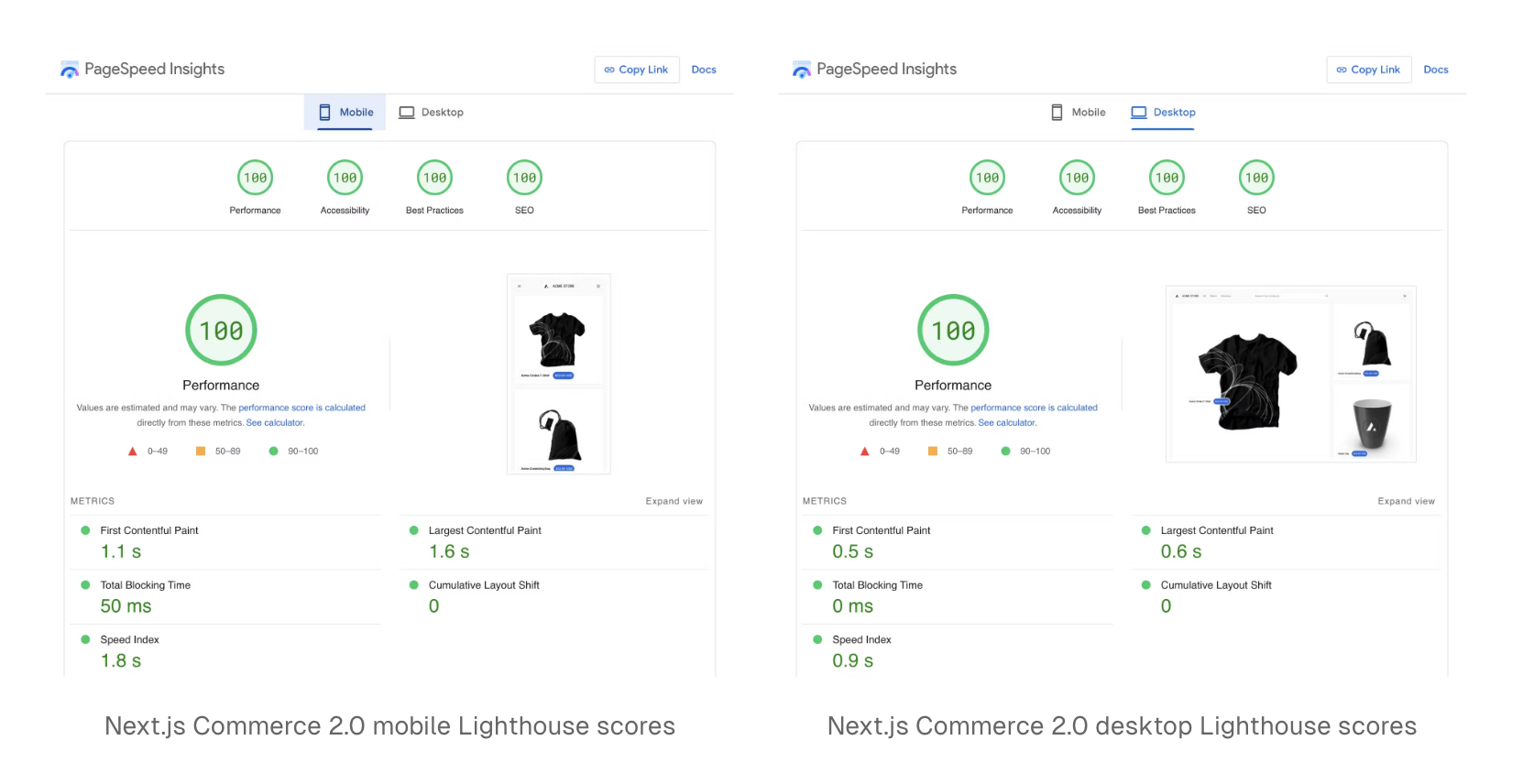
BigCommerce Catalyst
Just unveiled by BigCommerce, Catalyst is a Next.js based storefront with built-in Makeswift support. Catalyst is believed to be the future of BigCommerce storefront development. Its open-source architecture makes it easy to customize. Moreover, the use of Next.js means the learning curve for existing React developers is minimal.
Headless First Platforms
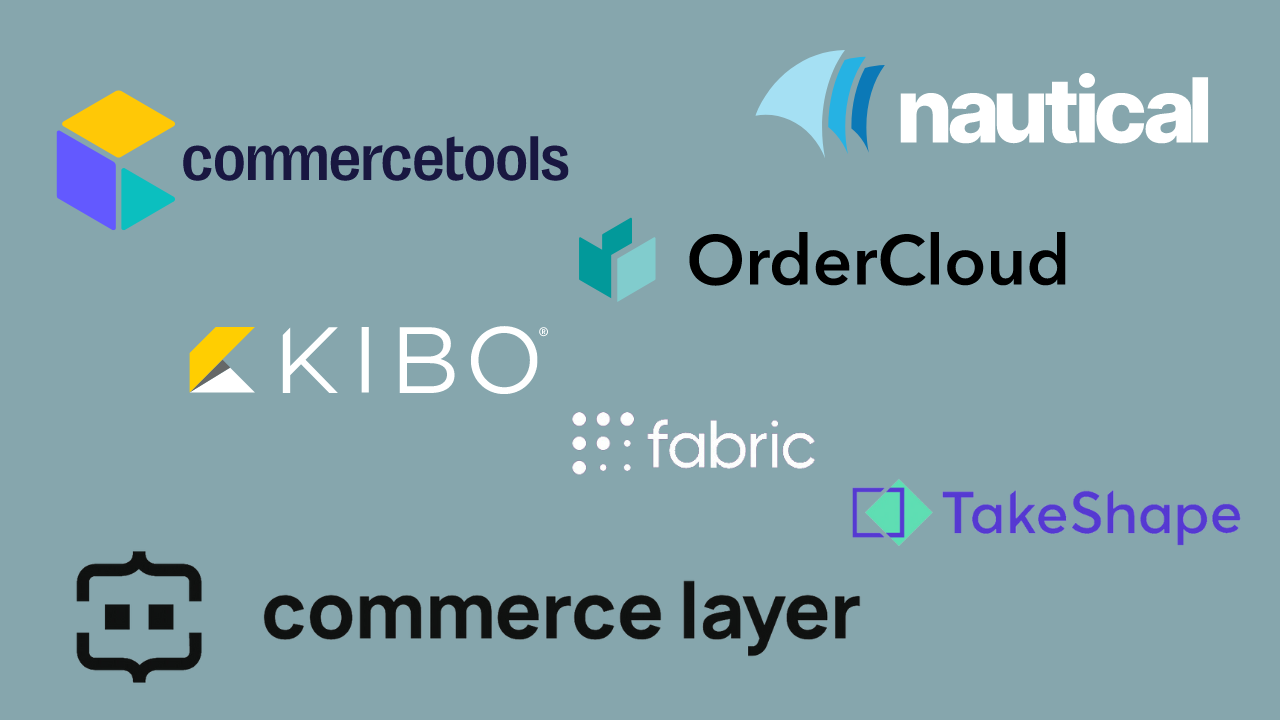
Commerce Tools
Commerce Tools have already established themselves as a key player in the enterprise space. Today, they continue to innovate, offering a robust API-only eCommerce platform for headless commerce. Its uniqueness lies in its cloud-native, microservices architecture. This design enables businesses to scale and adapt quickly. Furthermore, it frees them from the constraints of traditional eCommerce platforms.
Kibo
Kibo‘s unique approach to headless commerce has made it a favorite among retailers who look for scalable solutions while staying lightweight and nimble. Its omnichannel capabilities set it apart, enabling seamless integration between online and offline retail operations.
Elastic Path
Elastic Path has been pivotal in providing flexible eCommerce solutions. Online businesses benefit from its headless architecture and the acquisition of Moltin in 2020. This acquisition enhanced its eCommerce offering by adding more customization and extensibility options to its already versatile platform.
OrderCloud (Now SiteCore)
After its acquisition by SiteCore, OrderCloud has integrated seamlessly, offering more cohesive headless commerce solutions. Additionally, the platform stands out for its extensive B2B capabilities, which makes it a powerful tool for complex business models and workflows.
Fabric
Fabric‘s rise in the headless commerce sector is noteworthy, offering a scalable and customizable platform. What sets Fabric apart is its focus on API-first commerce. It enables businesses to leverage their existing systems and technologies while expanding their eCommerce functionalities.
Commerce Layer
Known for its lightweight yet powerful solutions, Commerce Layer continues to excel in the headless commerce arena. Moreover, its global eCommerce capabilities, such as multi-currency and multi-language support, help businesses expand their international reach.
Nautical Commerce
Nautical Commerce has carved a niche in multi-vendor headless commerce solutions, offering unique and efficient platforms. In particular, its platform is distinct for supporting marketplace functionality right out of the box. This feature enables businesses to launch and manage online marketplaces with ease.
TakeShape
Specializing in simplicity and integration, TakeShape has become a go-to for businesses venturing into headless commerce. Furthermore, its unique offering combines headless eCommerce with content management. This integration allows businesses to manage their products and content in a unified platform. Consequently, it creates a more cohesive digital experience.
Legacy Platforms Transitioning To Headless
Magento / Adobe Commerce
Adobe Commerce, powered by Magento, has been promoting headless through PWA Studio as an alternative to standard themes. Specifically, as a native solution for headless storefront builds, PWA Studio is preferred for creating advanced storefronts on Adobe Commerce.
BigCommerce / Makeswift
BigCommerce, especially after its acquisition of Makeswift, offers remarkable headless capabilities, blending agility with traditional eCommerce strengths. The integration of Makeswift’s drag-and-drop page builder into the Catalyst storefront allows merchants to easily create custom, high-performance web experiences. They no longer need to sacrifice the robust eCommerce features BigCommerce is known for.
Shopify / Hydrogen / Oxygen
Shopify’s Hydrogen and Oxygen frameworks mark its significant shift towards headless. It offers more flexibility and better performance to developers and users alike. While Hydrogen serves as a React-based framework for building custom storefronts, Oxygen is Shopify’s hosting solution for these storefronts. Together they provide a streamlined, powerful solution for merchants looking to adopt a headless architecture.
Salesforce Commerce Cloud
Salesforce Commerce Cloud has evolved beyond the legacy Demandware architecture and now offers a complete API for headless applications. The SFCC API enables seamless integrations with existing systems but also allows businesses to leverage Salesforce’s extensive ecosystem for enhanced customer relationship management.
Headless Frameworks & Hosting
React
React is the world’s most popular UI library, celebrated for its flexibility and efficiency. It enables the building of dynamic headless commerce interfaces using a component architecture.
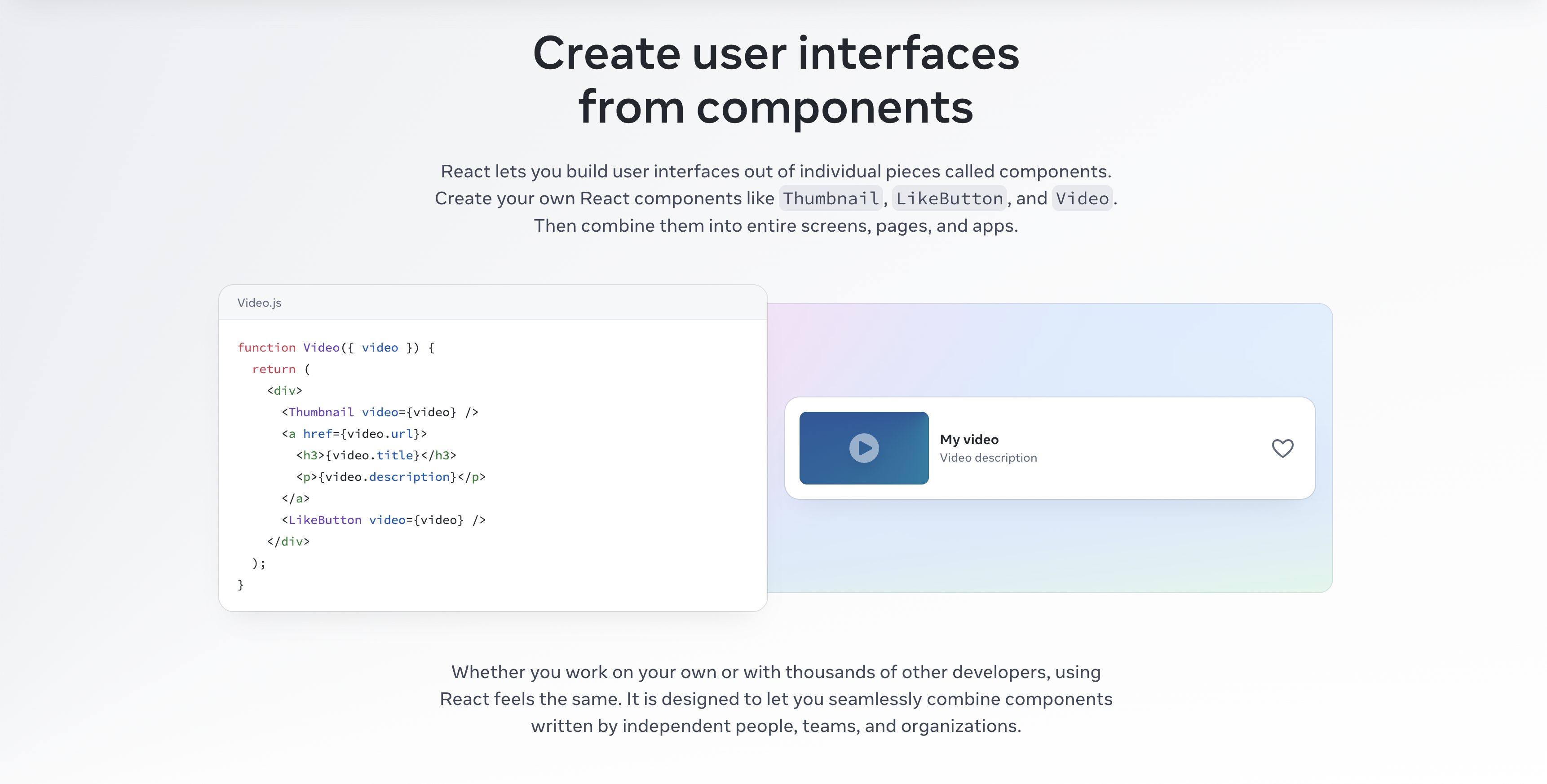
Vue.JS
As the backbone of Vue Storefront, Vue.JS maintains its popularity among developers in the headless commerce sphere. This is due to its reputation as a reliable component-based UI library.
Gatsby
Gatsby puts a special focus on performance. Thanks to pre-computer static pages, it has been a go-to for building fast and scalable eCommerce platforms. It will remain a popular choice in 2024. Its app ecosystem also simplifies integrations with most SaaS platforms, which sets it apart from the competition.
Netlify
Netlify has emerged as a leading hosting platform. It’s ideal for deploying and managing headless commerce applications no matter which framework they’re built on.
Vercel
Vercel, known for its performance and developer-friendly environment, is widely used for hosting headless commerce solutions. Specifically, it’s used for Next.js powered frontends.
Next.JS
Next.JS offers an optimal React framework for building server-rendered applications, crucial for performance-oriented headless eCommerce storefronts.
The Key Technologies
APIs & GraphQL
APIs (both REST and GraphQL) are the backbone of headless commerce. They enable seamless data integration between systems and serve as the glue between backend services and frontend interfaces. It’s fair to say that headless eCommerce wouldn’t exist without them.
Microservices
Microservice architecture is pivotal in headless commerce, allowing for modular and scalable eCommerce ecosystems. It’s often referred to as “composable commerce.” Microservice-based architectures allow for tighter control of backend functionalities. However, it comes with heavier maintenance requirements, compared to more monolithic approaches.
Cloud Native
The shift towards cloud-native technologies has enhanced the scalability and resilience of headless commerce platforms. It spares retailers the hassle of maintaining servers and having to proactively scale services ahead of peak seasons.
Service Workers
Service workers play a crucial role in offering customers offline functionality and performance optimization in headless commerce. They’re the backbone of Progressive Web Apps, enabling web pages to feel more like native applications.
Conclusion
As 2024 begins, headless commerce feels like it’s hit a certain level of maturity. It’s not just a trend but a fundamental shift in how eCommerce operates, offering unprecedented flexibility and customization. The future looks promising, with continuous innovations likely to further streamline and enhance the headless commerce experience. As a result, we’ll see more personalized and efficient online shopping environments.
The market is expected to see more legacy platforms transitioning to headless. New technologies will emerge and pure players will keep establishing themselves, driving the evolution of eCommerce forward.
If you’re looking to harness the power of headless commerce and want a partner who can translate this architecture into tangible business success, reach out to Trellis. Start a conversation today.
Leave a Comment